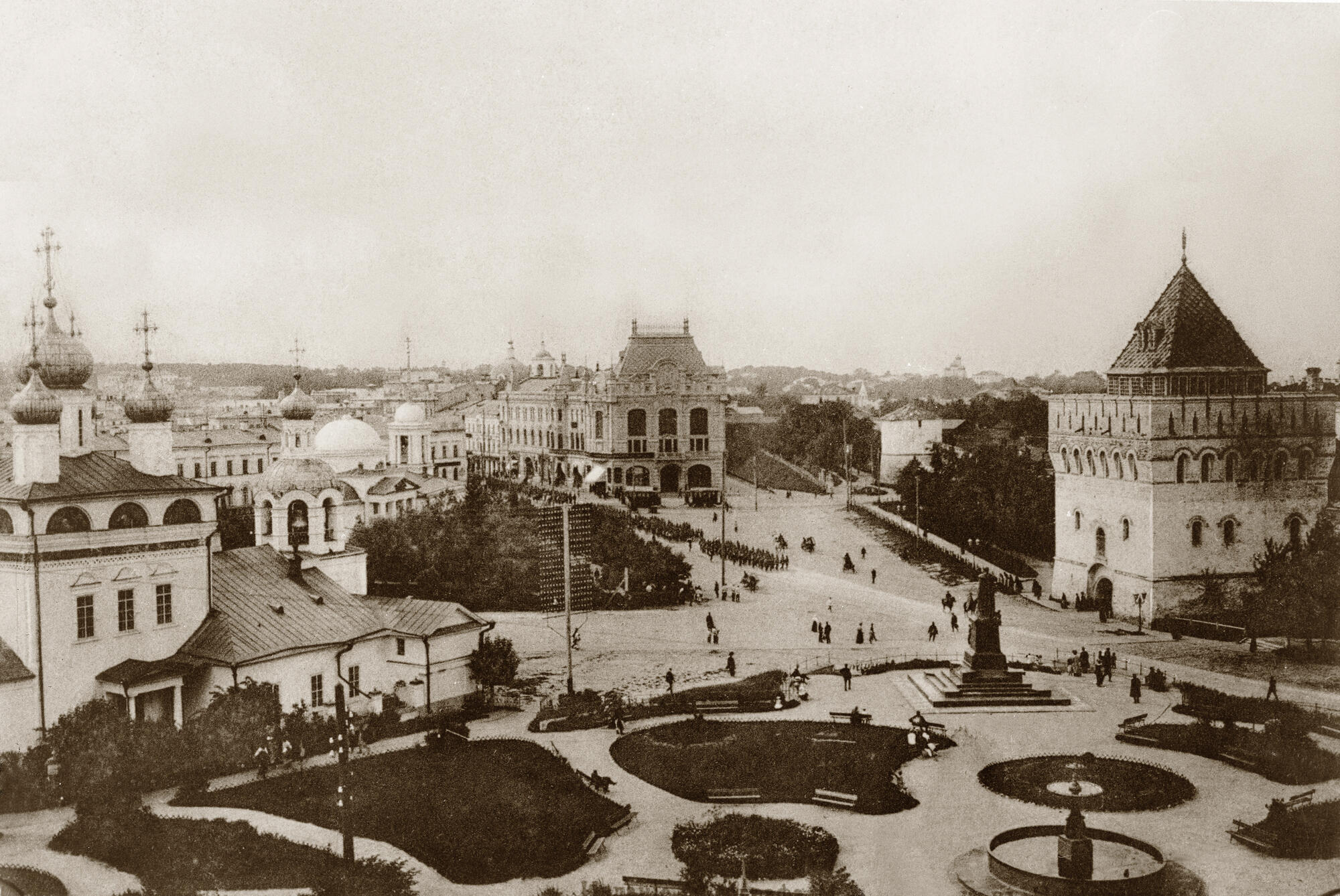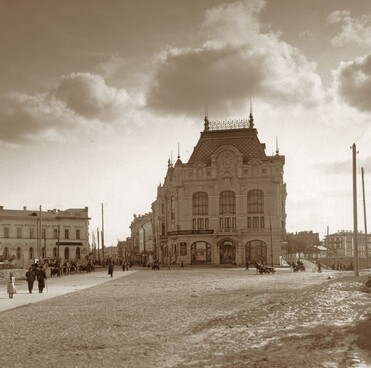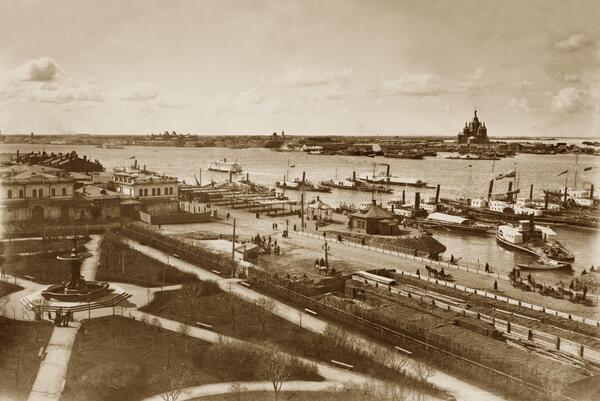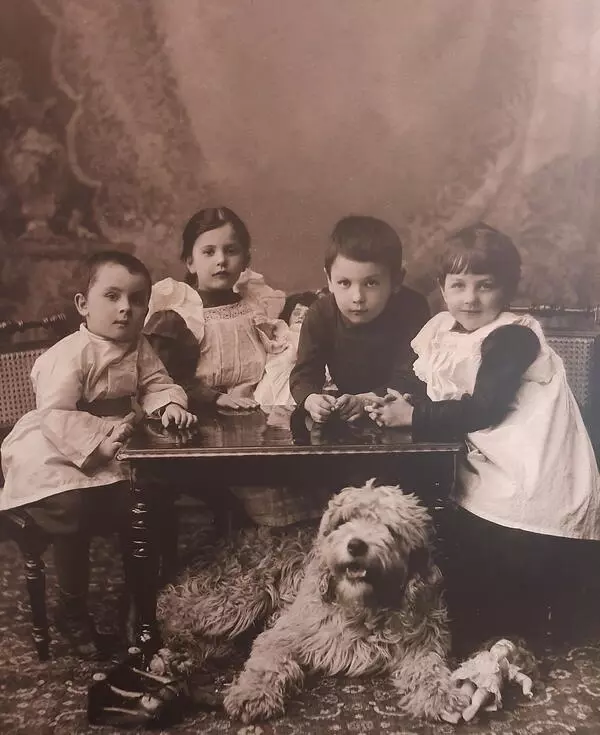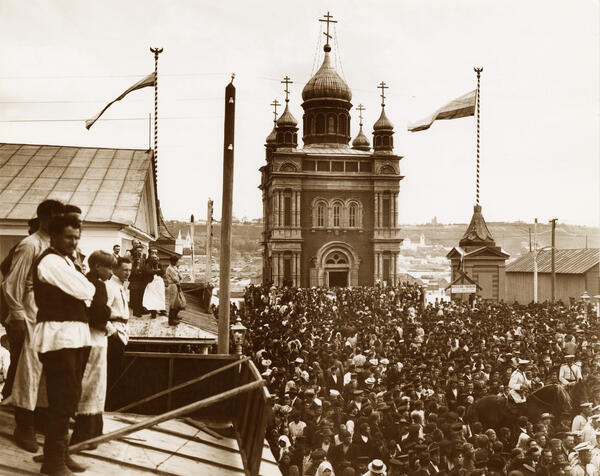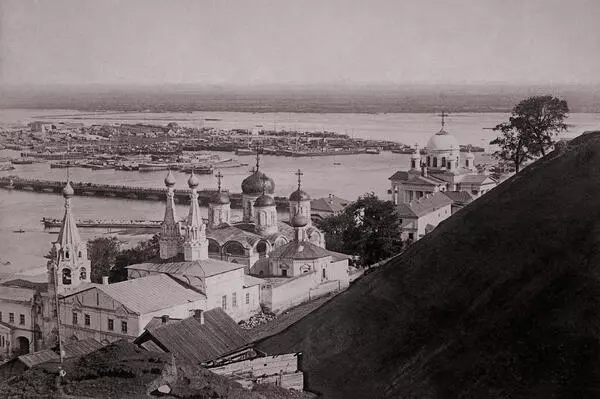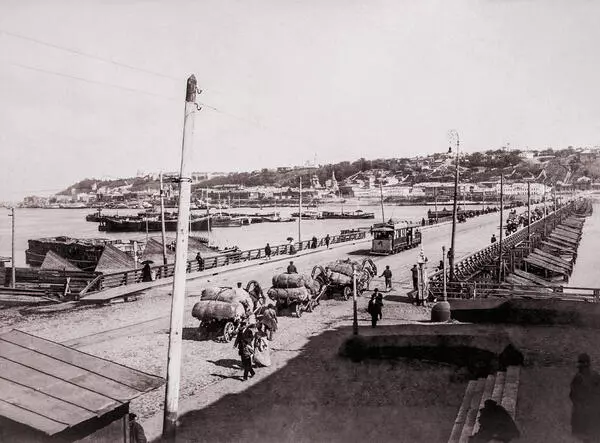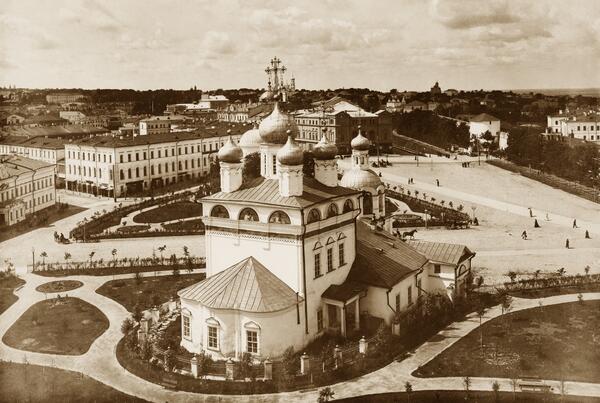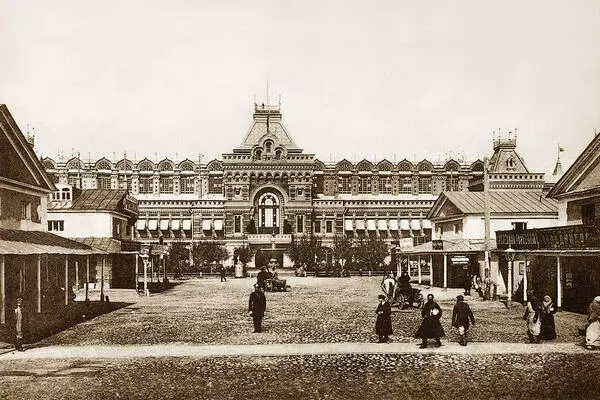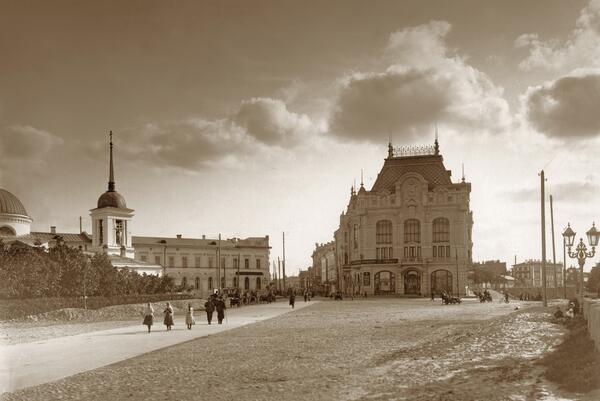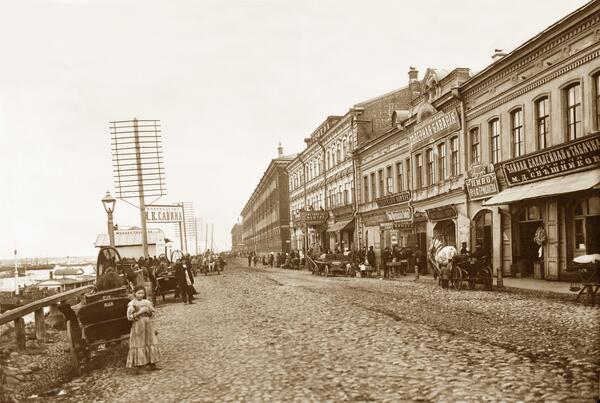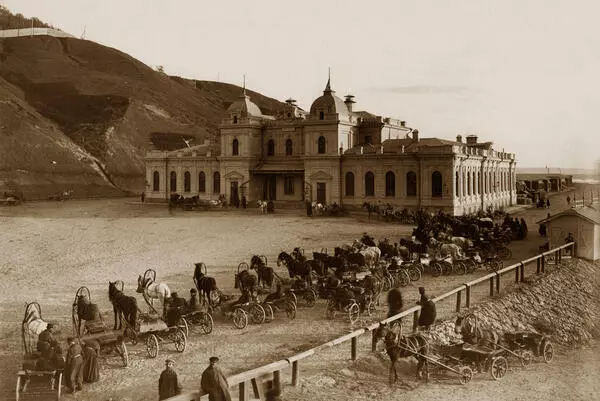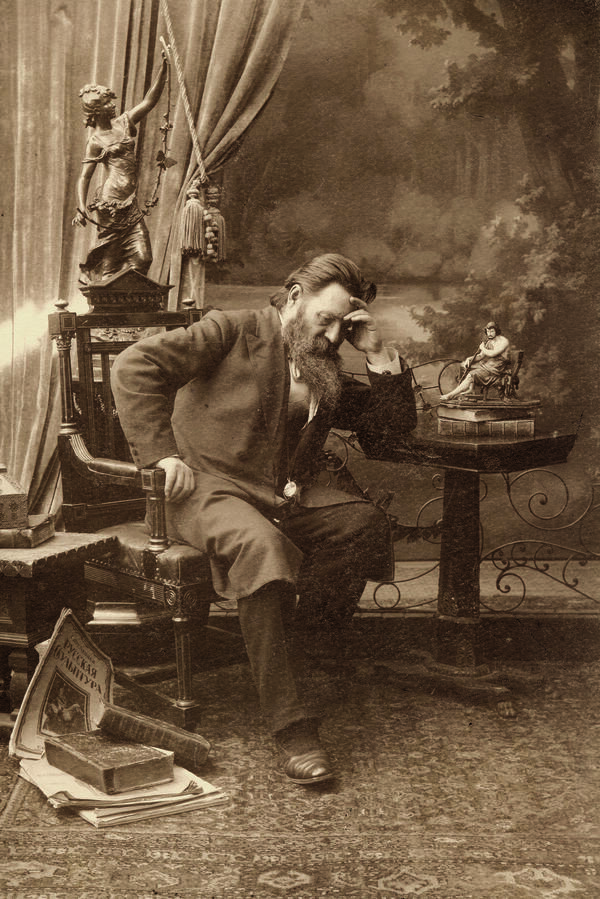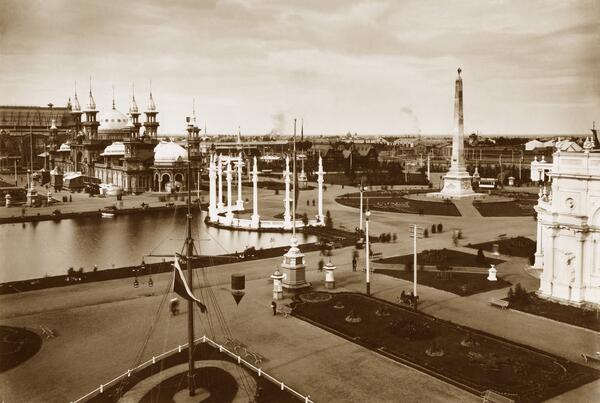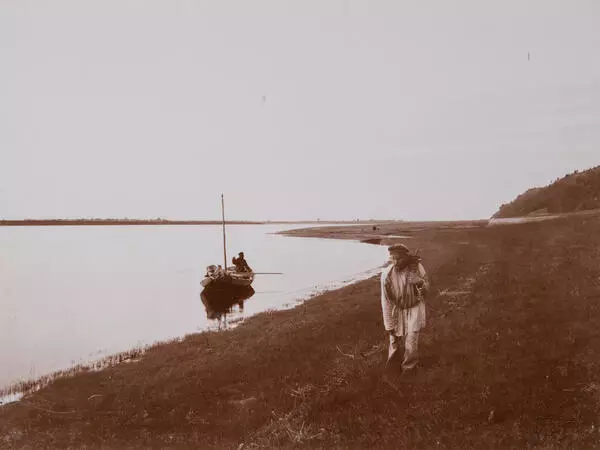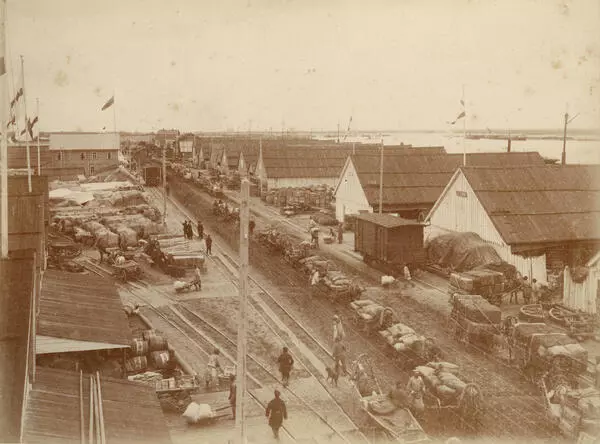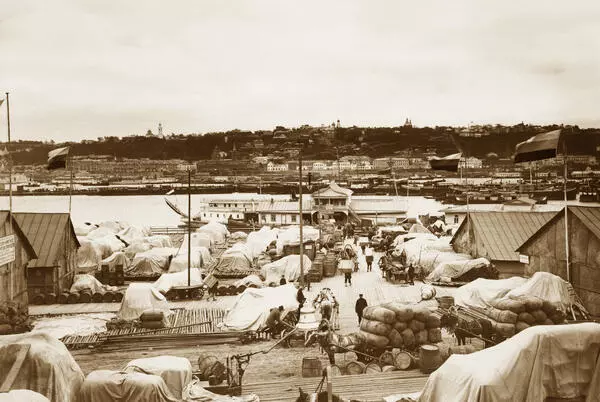Opposite the Annunciation Cathedral is one of the Kremlin’s symbolic towers called Dmitriyevskaya. The tower was the closest one to the Cathedral of St Demetrius of Thessaloniki, which used to stand on the site of the monument to Minin, and that is why it was named after it. The tower’s appearance changed many times. Until the early 1890s, it was lower, rectangular, with a flattened roof and resembling a tower house. Throughout its history, it housed a garrison school and then a jail where Alexander Radishchev was kept on his way to Siberian exile. In 1809, the tower was occupied by the governorate archive, which Alexander Pushkin is rumored to have visited in 1833.
The historian Nikolay Ivanovich Khramtsovsky describes Blagoveshchenskaya Square in his book “A Brief History and Description of Nizhny Novgorod” in the following way,Dmitriyevskaya Tower
This square is not very large, but it is rare to find such a square in governorate cities: all the buildings surrounding it are made of stone and are very beautiful…
By the opening of the 16th All-Russia Exhibition in 1896, the Dmitriyevskaya Tower was reconstructed and acquired a more modern look. It was decided to establish the Art and History Museum there. The project of the tower reconstruction was commissioned from Nikolay Vladimirovich Sultanov, an expert in Early Russian architecture from Saint Petersburg.
The project was approved, but suddenly a scandal broke out. According to the new project, the tower acquired architectural details that were not characteristic of the Nizhny Novgorod Kremlin. The newspapers of that time wrote,Some tall building is being built on Blagoveshchenskaya Square, narrow at the base and wide at the top, with its shape resembling a water tower.
In the spring of 1896, the reconstruction of the tower was finished. On June 25, 1896, the Art and History Museum was inaugurated in it. Andrey Andreyevich Karelin, the son of the famous Nizhny Novgorod photographer Andrey Osipovich Karelin, took an active part in the establishment of the museum.
In the summer of 1896, Emperor Nicholas II and his wife visited the museum. Special silver and bronze medals were issued to commemorate this event. The Dmitriyevskaya Tower housed the museum until 1918. Then the exhibits and paintings were relocated, and for a long time, the tower was the place for the scenery shop of the Opera and Ballet Theater. The Dmitrievskaya Tower currently houses one of the branches of the Nizhny Novgorod Museum of Local Lore.Ministry of Culture of the Russian Federation
